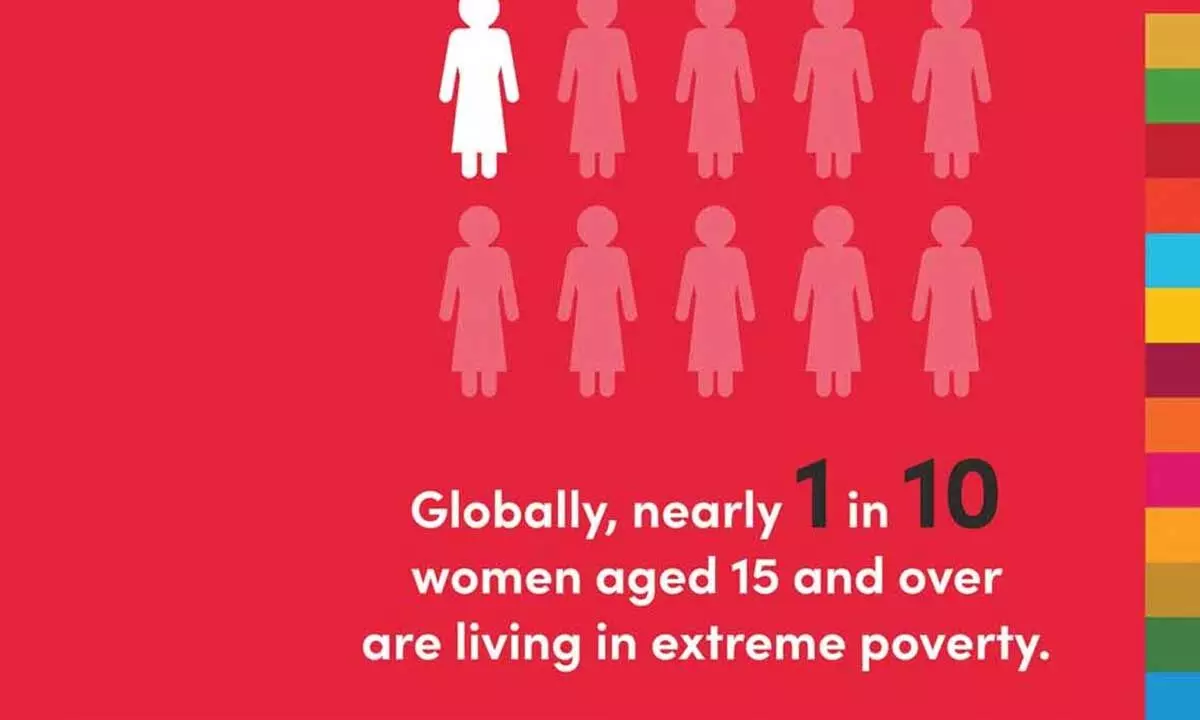One in every 10 women in the world lives in extreme poverty

The word ‘leisure’ conjures up different images for different people: warm breezes, iced tea, and a comfortable chair; an exhausting yet exhilarating sport; a stiff drink at the pub and an afternoon at the neighbourhood park with children.
The word ‘leisure’ conjures up different images for different people: warm breezes, iced tea, and a comfortable chair; an exhausting yet exhilarating sport; a stiff drink at the pub and an afternoon at the neighbourhood park with children.
Leisure indicates both the freedom to do something and the freedom to do nothing, and it is an aspect of life that Americans have fought to attain and still fight to defend. For women, however, leisure is complicated by their multitasking responsibilities, their lack of access to aspects of the public sphere, and their very sense of an inherent right to leisure time and leisure activities. From the start, women’s participation in leisure proved problematic. If paid employment served as the counterpoint to leisure, women’s lives did not readily fit into the discussion. Women’s day of both paid work and unpaid work applied in the nineteenth century as in the early 2000s. For those unmarried women who worked in industrial settings, leisure time was compromised by the expectation, for many, that they would turn their wages over to their families.
A lady of leisure typically evokes an image of a non-working woman who sits around doing nothing all day. But I’m embracing a more inspiring idea of this phrase — a path of pleasure quintessential to good living.
Working women and tourism has become an important topic of study vis-à-vis Women Consumer decision making (WCDM) in the last few decades. The present changes in the socio-demographics and working women psychographics has made the topic that much more significant.
This study tries to map the changes in factors influencing working women’s decision-making regarding leisure travel. The findings show several changes in their personality traits, motivation and decision-making regarding leisure travel. It also becomes evident that women’s travel behaviour is influenced by cultural identities. However, existing literature has also demonstrated that the men in the current era are supportive of their spouses in parenthood responsibilities.
Thus, women today represent around half of both leisure and travel markets. They are no longer the family traveller despite being married and having kids. According to a Pew Research Centre analysis of 2021-22 American time-use, working husbands in the United States, aged between 25 and 64, spend 28 hours a week on leisure, which is two hours more than working wives.
Meanwhile, in India, the setting isn’t any different. A 2019-2020 time-use survey carried out by the National Statistical Office indicates that Indian men spend more time than women on employment, socialising, sleeping and eating while nearly 20 per cent of the average woman’s day is consumed by unpaid domestic work or caregiving.
If these trends continue, then more than 342 million women and girls could be living in extreme poverty by 2030. To ensure women’s needs and priorities are considered, governments must prioritise gender-responsive financing and increase public spending on essential services and social protection.
Policymakers must also value, recognize, and account for the vital contribution women make to economies worldwide through paid and unpaid care work. Women spend around three times more time on unpaid care work than men and if these activities were assigned a monetary value then one can presume that this would account for more than 40 per cent of GDP. We cannot continue to miss out on the gender-equality dividend. More than 100 million women and girls could be lifted out of poverty if governments prioritise education and family planning, fair and equal wages and expanded social benefits.
Almost 300 million jobs could be created by 2035 through investments in care services, such as provision of daycare and elderly care. And closing gender employment gaps could boost gross domestic product per capita by 20 per cent across regions.
Sadly, the current reality is far from this. Programmes dedicated to gender-equality represent only four percent of official development assistance. An additional $ 360 billion is needed every year to achieve gender equality and women’s empowerment in developing countries. To cite a comparative instance, this is less than one fifth of the $ 2.2 trillion spent globally on military expenditure in 2022.
The areas needing investment are clear and understood. First and foremost there must be an investment in peace. Beyond this, are the need for laws and policies that advance the rights of women and girls; transformation of social norms that pose barriers to gender-equality; guaranteeing women’s access to land, property, health care, education, and decent work and financing women’s groups networks at all levels.
According to UN Women, the best tribute to every International Women’s Day is to “Invest in women, accelerate progress” as a means to accelerate economic growth and build a more prosperous, equitable society.
















